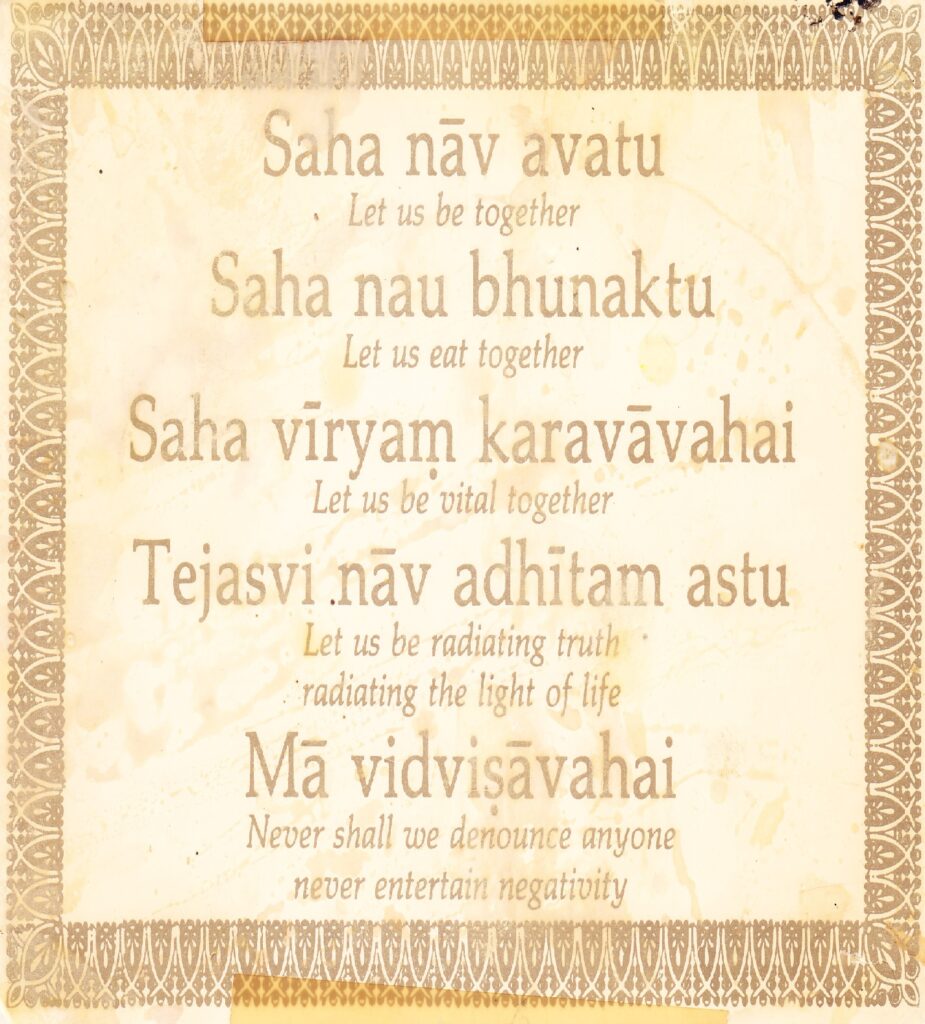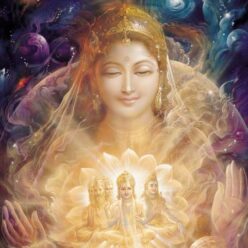The Vedas were first written 6000 years ago by Vyasa at the direction of God, Now for the first time in the history of Earth they have been upgraded to the “New Divine Energy of the Total Vedas” jointly by Vyasa and Divine Mother.


Vyasa is the title given to the Sage or Rishi who divides the holy scripture Vedas into separate books and writes them down at the end of every Dvapara Yuga of every MahaYuga cycle. Vyasa is also the legendary author of the Mahabharata, Vedas, and Puranas, some of the most important works in the Indian tradition. He is also called Veda Vyāsa or Krishna Dvaipāyana.
Divine Mother is the expression of the Divine Feminine Energy of God or Source, in the same way that Divine Father is the expression of the Divine Masculine Energy of God/Source. Both are expressions of the Supreme Wholeness or Oneness of God or Source. Divine Mother is known for her Unconditional Love for All Beings in Her Creation.
The Vedas

The “Samhita” of the Vedas actually means more than just the Collection of the Vedas. On a bigger level, it means the “Wholeness” or “Totality” of the Vedas which goes far beyond just the sum of the pieces or the books of the Veda. Once the Veda is broken into four books, the interconnecting Wholeness is lost and cannot be regained by any amount of study of the parts.
However, now Divine Mother has worked together with Vyasa to bring out all the books of the Veda in a new Divine Energy format. As a result of this process, they have also restored the Wholeness, Totality, or “Samhita” of the Vedas for the first time ever since the Veda was broken apart and written down. As a result of the rising consciousness of the Earth, Divine Mother has been working with Vyasa, and the Total Knowledge of the Vedas has been expanded to include 16 times more knowledge than ever before. Vyasa is in the process of revealing and commenting on all this new knowledge which is only available in it’s pure form as part of the New Total Vedas Divine Energies. It may be quite some time before it’s available in any dictated written form.

The New “Divine Energy of the Total Vedas” by Veda Vyasa, Divine Mother, and True Source includes the traditional books and sub-books listed below, along with much more additional information.
- Rig Veda – describes the unfoldment of Creation, also a book of Mantras and Hymns
- AyurVeda – the science and knowledge of perfect health.
- Panchakarma – the knowledge and techniques of purifying and healing the body and mind.
- Rasayana – the knowledge of all the herbal, mineral and medicinal remedies to create perfect health, happiness, and enlightenment.
- The Ashvins – the divine twin gods of health and wellness. Sons of the sun god Surya. They are considered to be the physicians of the gods.
- AyurVeda – the science and knowledge of perfect health.
- Yajur Veda – knowledge of Sacrificial Formulas
- Dhanur Veda – Science of Archery, Warfare, and the Vedic Science of Transformation
- Sama Veda – knowledge of Songs and Melodies
- Gandharva Ved – is the coherent flow of sound as creation unfolds, designed to promote balance, inner peace and better health. Also includes music and sacred dance.
- Atharva Veda – knowledge of medicine, magic formulas, spells and charms to protect oneself, or to delude and defeat enemies,
- Jyotish – oldest system of astrology in the world. Time keeping, predicting the future, understanding the past, and procedures to avoid the dangers that have not yet come.
- Sthapathyaveda – is a complete system of architecture and planning according to the solar, lunar, and planetary influences on the earth.
- Artha Sastra – treatise on statecraft, economic policy and military strategy.
Veda Vyasa also means “splitter of the Vedas”
The Vedas manifest at the beginning of every cycle of creation for the welfare of the world. The Vedas express the very nature of the sequential unfoldment of Creation. The Vedas also help humans to know their essential nature, and return from their embodied, limited state as bound souls (jivas) to their eternal state as liberated souls. They also help humans to invoke the power of God, and the more individualized gods, to deal with the problems of the mortal world, death and disease. Hence, they are considered invaluable for the material and spiritual wellbeing of the world. Each Veda has four subdivisions – the Samhitas (mantras and benedictions), the Aranyakas (text on rituals, ceremonies, sacrifices and symbolic-sacrifices), the Brahmanas (commentaries on rituals, ceremonies and sacrifices), and the Upanishads (texts discussing meditation, philosophy and spiritual knowledge). Some scholars add a fifth category – the Upasanas (worship). The texts of the Upanishads discuss ideas akin to the heterodox sramana-traditions.
A basic principle of life from the Vedas

The Samhita = the Wholeness
Always add back the Samhita as move to next level or after thinking the Sutra
- Rig Veda: The Book of Mantra and Hymns of Praise
But here’s the thing about the Vedas — there is no acclaimed human “author”. The books of the Veda are simply the “language of Nature” in a form comprehensible to humans.
The Vedas were channeled by risis (the seers, the sages) from the very breath of “Source.” “Source” being the Paramātman: the “Primordial Self” or the “Absolute Atman.” The risis saw and interpreted the Vedas, but they did not compose them.
There are seven risis credited to channeling the Rigveda: Atri, Kanwa, Vashistha, Vishwamitra, Jamadagni, Gotama, and Bharadwaja:
The text is layered, consisting of the Samhita, Brahmanas, Aranyakas and Upanishads.
The Ashvins are the divine twin gods of health and wellness. Sons of the sun god Surya. They are considered the physicians of the gods.

As mentioned earlier, each subsequent age is witness to a gradual decline of wisdom, knowledge, intellect, life span, physical and spiritual strength in humankind as a whole. This automatically also implies decline and destruction of dharma or righteousness. Earth entered Kali Yuga approximately 5-6000 years ago.
· Satya Yuga
Dharma and virtue reigned supreme at this time, with human stature being estimated at 21 cubits. The average human lifespan at this point in time was 100,000 years. The Vedas were easily memorized and passed down by oral tradition.
· Treta Yuga
This Yuga witnessed the decline of virtue by a quarter of the previous one. Human stature was valued at 14 cubits and average human lifespan was 10,000 years.
· Dvapara Yuga
Virtue and sin were divided into equal halves. Normal human stature was 7 cubits and human lifespan went down to 1000 years. At the end of this Yuga, God told Vyasa to write down the Vedas since humans would not be able to remember it in Kali Yuga.
· Kali Yuga
This Yuga has only 1/4 virtue and the rest is taken over by 3/4 sin. Human stature is gradually reduced to 3.5 cubits (5.25 feet) and average human lifespan is about 100 years. It is believed that, towards the end of this terrible Dark Age, average human lifespan would go down to 20 years.
(1 cubit = 1.5 feet, 2 cubits = 3 feet, 3 cubits = 4.5 feet, 4 cubits = 6 feet, 7 cubits = 10.5 feet, 14 cubits = 21 feet, 21 cubits = 31.5 feet)
